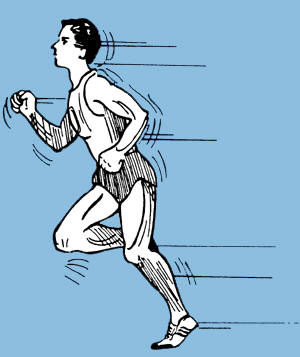 The countdown ’til the New York Marathon is running out! In twenty seven days, thousands of participants will be hitting the pavement… and so will their feet! Whether you’re participating or not (I certainly know I couldn’t!), taking care of your feet should be part of your normal routine. Here are some tips for keeping them in tip top shape, care of Dr. Johanna Youner.
The countdown ’til the New York Marathon is running out! In twenty seven days, thousands of participants will be hitting the pavement… and so will their feet! Whether you’re participating or not (I certainly know I couldn’t!), taking care of your feet should be part of your normal routine. Here are some tips for keeping them in tip top shape, care of Dr. Johanna Youner.
NYC podiatrist Dr. Johanna Youner is one of the premier cosmetic foot surgeons in the country. She leads the well-known practice, Park Avenue Podiatric Associates, and is a known innovator in the field of podiatry thanks to advances like using dermal fillers to treat corns. Dr. Youner offers foot related advice and tips to runners participating in this year’s New York City Marathon that will keep feet in tip-top shape and have them feeling like a champion at the finish line:
- Stretching – Stretching primes the body for the strenuous activity so be sure to stretch before and after running, paying special attention to the calves, hamstrings, quads and feet
- Shoes – Invest in a good pair of running shoes as they provide the specific impact support that running demands; if feet sweat heavily try putting talcum powder in your shoes to keep feet dry
- Orthodics – If you have arch or heel pain, you may be a perfect candidate for orthodics, which are now widely available in over-the-counter varieties; visit your doctor to learn what option is best for you
- Socks – Cotton socks absorb moisture and what you don’t want during the marathon are wet socks; opt instead for a synthetic sock (containing acrylic) to help keep moisture from your skin thus reducing the likelihood of a fungal growth. Another secret of the pros is to avoid situating the seams in a place where the shoe is tight – the pressure can force the seam to dig into the skin causing pain and blistering
- Anti-Inflammatory Medications – Do not preemptively pop Advil to prevent aches that may arise during the race; pain is a valuable indicator during high-impact events and taking anti-inflammatory medications will mask any red flags the foot sends up during the race
- Groom Toenails – Make sure your toenails are trimmed to no longer than the tip of toes before the race to avoid a painful ingrown toenail or even a fungal nail
- Blisters – Blisters result from excessive friction between shoes and feet so take preventative steps by making sure shoes fit properly and are laced up to fit snugly; if you are prone to blisters, apply Vaseline to problem areas prior to your run or try padded “blister proof†socks like those made by Thorlo. Dr. Youner also suggests applying moleskin to problem areas also prevents blisters from forming
- Visit Your Podiatrist – Dr. Youner’s patients who run in the New York City Marathon make appointments the week before the race to get rid of corns and calluses, stock up on moleskin, get advice on orthodics, and in some cases, receive cortisone injections for heel spurs (plantar fasciitis) so they can run in their dream event
- Finish Line – When the race is complete, Dr. Youner prescribes RICE: Rest your feet, Ice feet to keep inflammation and swelling down, Compress with ACE wraps to reduce swelling and Elevate feet to help them rest up for the next big run.
Runner’s Injuries, Prevention and Treatment
Although numerous injuries can occur during a long distance run, the most common are shin splints, runner’s knee and plantar fasciitis. Shin splints develop along the front of the lower leg and are commonly caused by running on hard surfaces, overtraining, weak muscles, wearing shoes that lack support and running downhill. Chronic shin splints can be very painful and may indicate a stress fracture. Runner’s knee is the most common pain found among runners and is often caused by weak muscles supporting the knee and unsupportive shoes. Women with wider hips are also naturally prone to the condition. Heel pain caused by plantar fasciitis is seen in patients who are overweight, have flat feet, or are starting a new running program. Stress placed on this ligament in the foot can lead to heel pain. To avoid all of these maladies, Dr. Youner recommends stretching before and after activity. If any of these symptoms develop and persist, contact your podiatrist.
For more information about Dr. Youner, visit healthyfeetny.com. And, if you’re going to be participating in the NY Marathon-GOOD LUCK!
PS-I HATE feet, and I hate writing about them even more… so you should definitely know that this is important if I’m getting over the gross out and putting up the post!